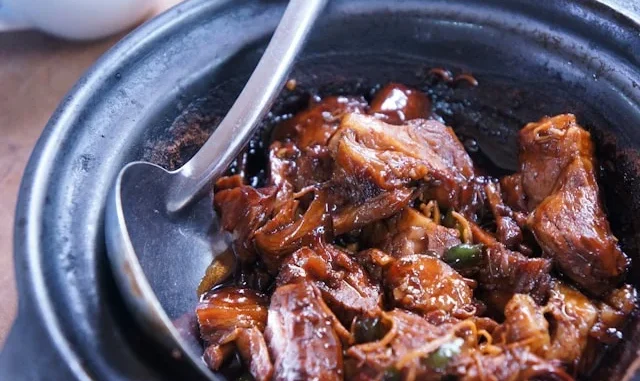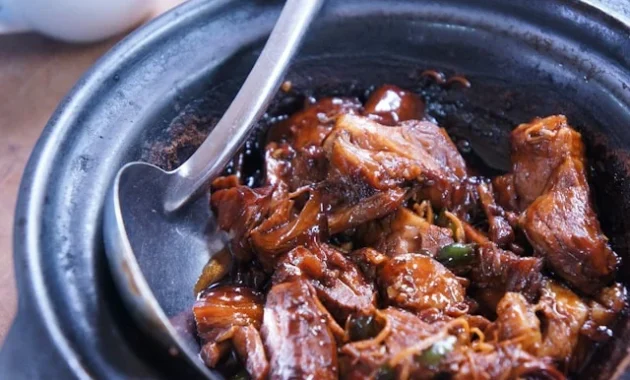
Malaysia’s unique blend of Malay, Chinese, Indian, and indigenous influences has given rise to a culinary scene that is both diverse and harmonious. Each ethnic group has brought its own ingredients, cooking techniques, and flavors, resulting in a rich tapestry of tastes.
Malay Cuisine: Aromatic and Flavorful
Malay cuisine is characterized by its use of aromatic herbs and spices, coconut milk, and a balance of sweet, sour, and spicy flavors. One of the most iconic Malay dishes is Nasi Lemak, considered the national dish of Malaysia. This fragrant rice cooked in coconut milk is served with sambal (a spicy chili paste), anchovies, peanuts, boiled egg, and cucumber slices. Another must-try is Rendang, a slow-cooked beef dish infused with rich spices and coconut milk, traditionally prepared during festive occasions.
Chinese Cuisine: Fresh and Varied
Chinese cuisine in Malaysia is incredibly varied, reflecting the different regional cuisines of China. From the bustling hawker stalls to fine dining establishments, Chinese Malaysian food is known for its fresh ingredients and bold flavors. Char Kway Teow is a popular street food dish made with flat rice noodles stir-fried with prawns, Chinese sausage, eggs, and bean sprouts in a smoky wok. Hainanese Chicken Rice, a simple yet flavorful dish, features poached chicken served with fragrant rice and accompanied by garlic-chili sauce and ginger paste.
Indian Cuisine: Spicy and Savory
Indian cuisine in Malaysia is predominantly influenced by South Indian flavors, particularly from Tamil Nadu. The use of spices, herbs, and vegetarian ingredients is a hallmark of this cuisine. Roti Canai, a flaky flatbread, is often enjoyed with dhal (lentil curry) or a variety of meat curries. Nasi Kandar, a meal of steamed rice served with an array of curries and side dishes, is another staple of Indian Malaysian cuisine, known for its rich and complex flavors.
Indigenous and Fusion Cuisine: Unique and Diverse
Malaysia’s indigenous communities and the fusion of different culinary traditions have also contributed to the country’s vibrant food scene. The Iban and Kadazan-Dusun communities in Borneo, for example, have their own unique dishes, such as Manok Pansoh (chicken cooked in bamboo) and Hinava (a type of raw fish salad). Fusion cuisine, such as Nyonya or Peranakan food, blends Chinese ingredients with Malay spices and cooking techniques, resulting in dishes like Laksa (a spicy noodle soup) and Ayam Buah Keluak (chicken with black nuts).
Iconic Street Food
Malaysia’s street food is legendary, with bustling hawker centers and night markets offering a dizzying array of mouth-watering dishes. Street food in Malaysia is not just about eating; it’s a cultural experience that brings people together.
Satay: Skewered Perfection
Satay is a beloved Malaysian street food consisting of marinated meat skewers grilled to perfection over an open flame. Served with a rich peanut sauce, cucumber, onions, and rice cakes, satay is a dish that tantalizes the taste buds with its smoky, savory flavors.

Assam Laksa: A Tangy Delight
Assam Laksa is a tangy and spicy noodle soup made with mackerel, tamarind, and a medley of herbs and spices. The broth is both flavorful and refreshing, with a perfect balance of sour and spicy notes. Topped with cucumber, pineapple, and mint leaves, this dish is a favorite among locals and tourists alike.
Cendol: A Sweet Treat
For dessert, Cendol is a must-try. This icy treat consists of shaved ice topped with green rice flour jelly, coconut milk, and palm sugar syrup. The combination of sweet and creamy flavors makes it a perfect way to cool down on a hot day.
Dining Experiences
Malaysia offers a range of dining experiences, from humble hawker stalls to elegant fine dining restaurants, each providing a unique culinary adventure.
Hawker Centers: A Food Paradise
Hawker centers are a cornerstone of Malaysian dining culture, where vendors sell a variety of dishes at affordable prices. Places like Jalan Alor in Kuala Lumpur and Gurney Drive in Penang are famous for their vibrant atmosphere and diverse food offerings. Here, you can sample everything from Hokkien Mee to Apam Balik (a sweet pancake filled with peanuts, corn, and sugar).
Fine Dining: Elevating Malaysian Cuisine
Malaysia’s fine dining scene has grown in recent years, with chefs reinterpreting traditional dishes with modern techniques and presentations. Restaurants like Dewakan in Kuala Lumpur, which focuses on indigenous Malaysian ingredients, and Blanchette in Penang, known for its contemporary twist on Peranakan cuisine, offer exceptional dining experiences that showcase the best of Malaysian flavors.
Traditional Feasts: Celebrating Culture
Festive occasions in Malaysia are often marked by traditional feasts that bring families and communities together. During Hari Raya Aidilfitri, the end of Ramadan, families prepare a variety of dishes such as Ketupat (rice cakes) and Lemang (glutinous rice cooked in bamboo). Similarly, Chinese New Year is celebrated with reunion dinners featuring dishes like Yee Sang (a prosperity salad) and Nian Gao (a sweet rice cake).
Culinary Festivals
Malaysia’s love for food is celebrated through numerous culinary festivals held throughout the year.
Malaysia International Gastronomy Festival
The Malaysia International Gastronomy Festival (MIGF) is an annual event that showcases the country’s best chefs and restaurants. Featuring gourmet dinners, cooking demonstrations, and food tastings, the festival is a highlight for food enthusiasts looking to experience Malaysia’s culinary excellence.
Penang International Food Festival
The Penang International Food Festival is a two-week celebration of Penang’s rich culinary heritage. With events ranging from street food fairs to fine dining experiences, the festival offers a comprehensive look at the island’s diverse food culture.
Sabah Food Festival
The Sabah Food Festival celebrates the unique flavors of Borneo, highlighting indigenous ingredients and traditional cooking methods. Visitors can sample dishes like Hinava and Tuaran Mee while enjoying cultural performances and cooking demonstrations.